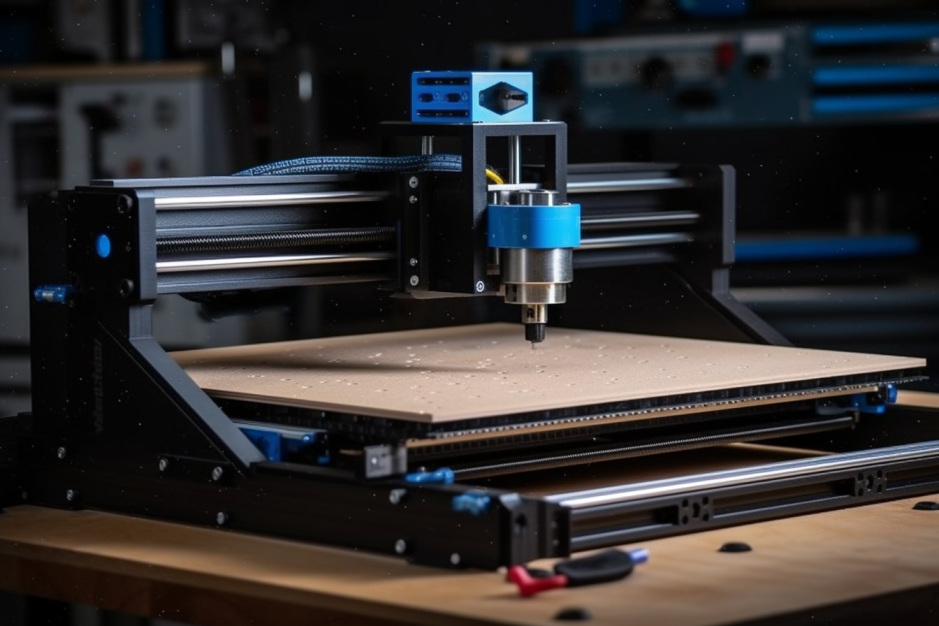AI-generated website posts offer efficiency for SEO but may lack accuracy and context understanding. While AI boosts content volume and keyword targeting, its limitations can lead to inaccuracies
From Design to Product: A Step-by-Step Process of CNC Cutting
The CNC cutting process has revolutionized manufacturing by allowing for precise, consistent, and efficient material removal. It’s beneficial to know where to find a CNC wood cutting service near me for specialized needs. As technology has evolved, CNC machines have become more advanced, offering greater capabilities and more intricate design possibilities. For those in the manufacturing industry, understanding the complete process of cutting, from initial design to final product, is crucial for maximizing efficiency and getting the most out of CNC machines. Properly utilizing CNC machines involves not only understanding the technical aspects of the machines but also the materials being used, the software that controls the machines, and the post-processing required to finish the product.
Step 1: Designing the Model
The first step in the CNC cutting process is designing the model. This involves creating a detailed 2D or 3D design of the final product using CAD (Computer-Aided Design) software. It is essential to pay attention to every detail and ensure the design is error-free, as this will be the blueprint that the CNC machine will follow.
Step 2: Converting the CAD File to a CNC Program
Once the design is complete, it must be converted into a format that the CNC machine can understand. This is usually done by exporting the CAD file into a CNC program using CAM (Computer-Aided Manufacturing) software. The CAM software converts the design into a series of instructions, called G-code, which guides the CNC machine’s movements.
Step 3: Setting up the CNC Machine
Before starting the cutting process, the CNC machine must be set up. This involves securing the material onto the machine’s work table, selecting the appropriate cutting tools, and configuring the machine’s settings, such as cutting speed, feed rate, and cutting depth. It is crucial to ensure everything is set up correctly to avoid mistakes and achieve the desired results, particularly when working with a professional CNC machining service.
Step 4: Running the CNC Program
With everything set up, the CNC program is loaded into the CNC machine, and the cutting process begins. The machine follows the instructions in the G-code, precisely moving the cutting tool along the predetermined path to remove material and create the desired shape. This step is crucial for tasks such as spraying MDF, as the precision of the CNC machine ensures a smooth surface for painting.
Step 5: Post-Processing
After the cutting process is complete, the workpiece may require some post-processing, such as sanding, polishing, or assembling with other parts. This is an essential step to ensure the final product meets the desired quality and specifications. Sanding is particularly important for removing any rough edges or burrs left behind by the cutting process, and it also prepares the surface for painting or finishing. For example, if the workpiece is made of MDF, it may require a coat of spray paint for MDF wood to achieve a finished look.
Tips for Maximizing CNC Machine Efficiency
- Proper Maintenance: Regularly check and maintain the CNC machine to ensure it is in optimal working condition. Clean the machine after each use, lubricate moving parts, and replace worn-out tools and components.
- Optimize Cutting Parameters: Adjust the cutting parameters, such as cutting speed, feed rate, and cutting depth, to find the optimal settings for each material and cutting tool. This can help maximize cutting efficiency and extend tool life.
- Proper Material Selection: Choose the right material for the job. Different materials have different properties, and it is essential to select a material that is suitable for the final product’s intended use. For example, when cutting MDF board, it is crucial to choose the right type of MDF to achieve the best results.
- Use High-Quality Tools: Invest in high-quality cutting tools that are suitable for the material being cut. This can help achieve better cutting results and reduce the risk of tool breakage.
- Effective Workholding: Ensure the workpiece is securely fastened to the machine’s worktable. This can help prevent the workpiece from moving during the cutting process and ensure accurate and consistent results.
By following these steps and tips, manufacturers can ensure a smooth and efficient CNC cutting process, from initial design to final product. With proper knowledge and preparation, cutting can offer incredible benefits, such as increased precision, consistency, and cost savings.
FAQs
What is CNC Cutting?
CNC (Computer Numerical Control) cutting is a process where a computer controls a cutting machine to remove material and create a desired shape. It can cut a range of materials, including metals, plastics, wood, and foam.
What are the benefits of CNC cutting?
CNC cutting offers precision, consistency, flexibility, and efficiency in producing parts with intricate shapes and fine details.
How can I optimize my CNC cutting process?
- Maintain the CNC machine.
- Select appropriate cutting tools and parameters.
- Secure the workpiece.
- Use high-quality CAD/CAM software.
What are common mistakes to avoid?
- Using dull or damaged tools.
- Improper material selection.
- Incorrect cutting parameters.
